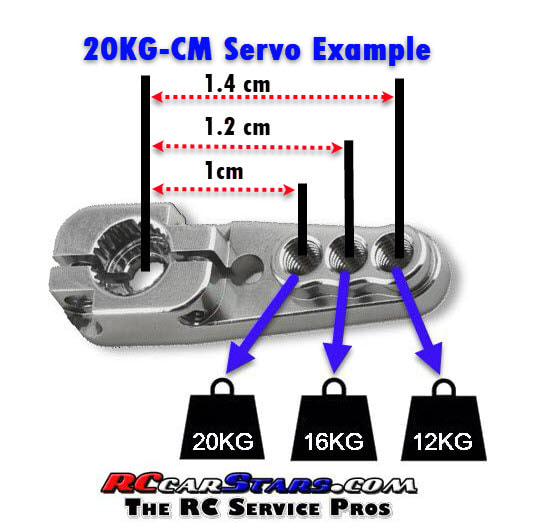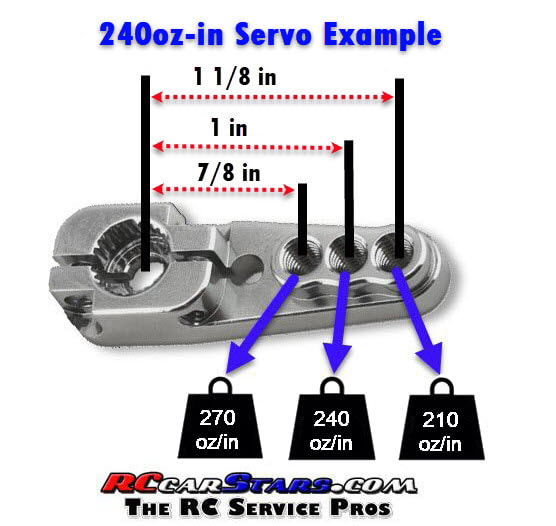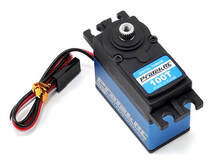Torque Rating: The torque rating determines the maximum amount of force the servo can apply at a right angle to a lever (servo arm). This torque force specification is measured and listed in the servo specifications as ounce inches (oz-in) or kilogram centimeters (kg-cm).
The larger the number, the more force the servo can exert. So this is helpful to use to help choose the correct servo strength based-upon the RC application. For example, scalers and crawlers tend to get the wheels wedged in-between rocks and will blow-out a weak servo rather quickly. They need torque at 250oz/in or more to be safe. 8 scale buggy racers because of speed and weight also require a heavier torque rating. Indoor 1/10 scale buggies tend to be around the 125 to 250oz/in range and on-road and RTR rc cars as a general rule are around 120oz to 175oz/in range. Again these are just examples, and your driving style, type of driving surface, rc weight, skill level and more all play factors in choosing the correct servo torque for your personal liking.
So what exactly does 20 kg-cm or 240 oz-in mean? "And how is it affected by the "hole" you choose on the servo arm?"
Remember the Torque Rating is based on the distance from the center of the servo shaft to the hole selected in the servo horn.
In the second example the 240oz/in is actually the second hole as it is 1 inch away from the center of the servo shaft.
So with these examples, you basically can see that the "actual torque changes by the hole you choose on the servo arm". This is one of the main reasons so many people have issues with servos because they maybe actually no where close to the torque they need for the application if they do not measure distance and do some quick math.
Servo Operation Voltage: Oh yeah, power to the servo also will change the torque rating. Most modern ESCs can be set to 6 volts and the higher-end ESCs can do 7.4volts or more in the settings. So always pay attention to this also as this is another reason servos fail because of lack of power to servo.
Servo manufacturers usually always provide specs for both speed and torque specifications in two common voltages used for receiver battery packs, 4.8 volts and 6.0 volts. This also translates over to the typical ESC & BEC's for voltage regulation for your electronics. Obviously the 6.0 volts gives slightly higher speed and torque ratings.
High voltage servos (HV) are starting to become more popular and are generally shown with speed & torque specs at 6.0V, 7.4V, & 8.4. These servos will continue to grow in popularity as 2S LiPo battery packs, along with higher current programmable ESCs/BEC's become more and more popular.
As always we hope you find these tips helpful to your understanding of the RC hobby!!!




 RSS Feed
RSS Feed